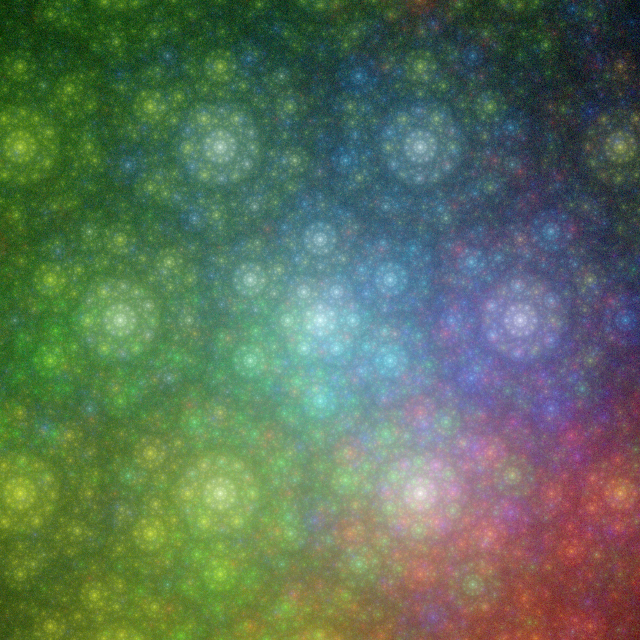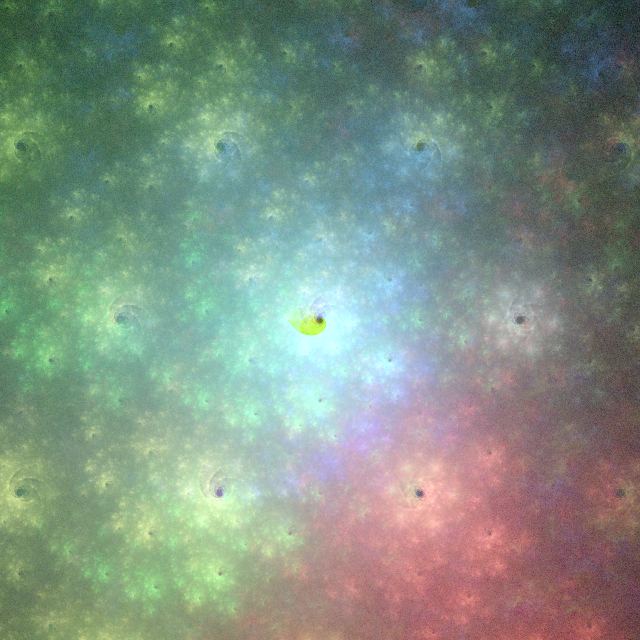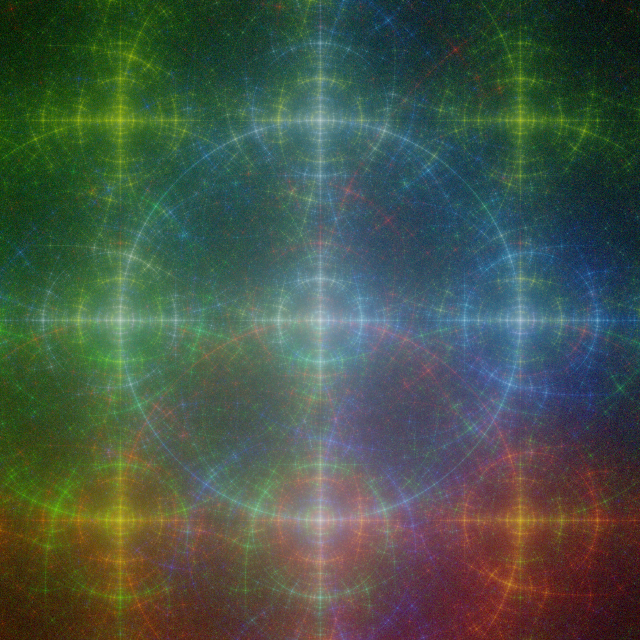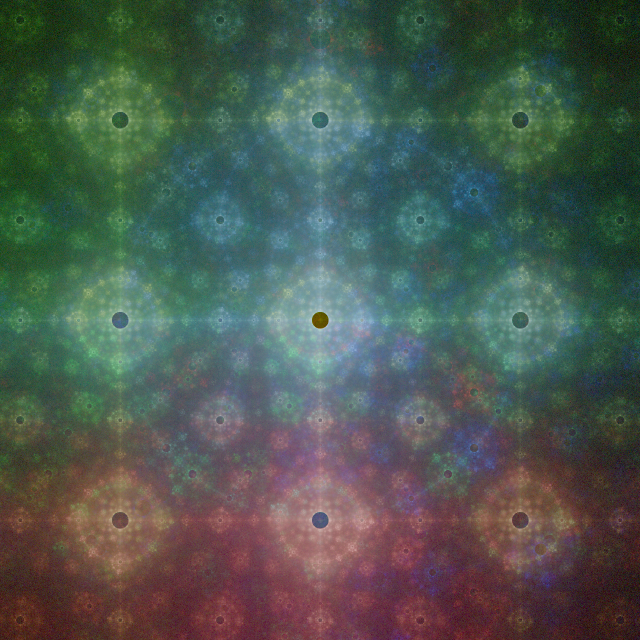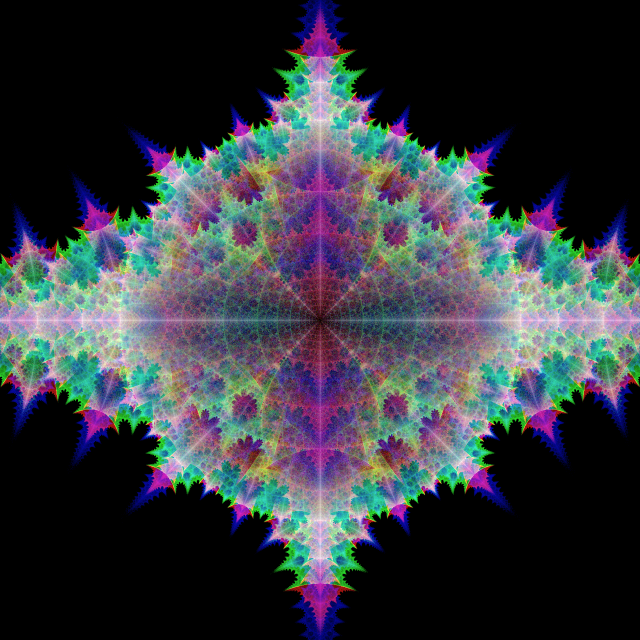Lots of videos have been made of zooms into the Mandelbrot set. These videos almost all follow the same pattern. The initial image is the familiar one of the entire set. One zooms in on some tendril or other, gathering details, passing various minibrots and possibly some embedded Julia sets on the way until one reaches a final minibrot and the zoom stops.
The reason for this is that these sequences are relatively quick to calculate, they show a variety of the different types of behaviors that the Mandelbrot set has to offer, and they have a natural endpoint which causes the video not to seem like it has been cut off part-way through.
If we relax these conditions, what interesting zoom sequences open up to us?
To answer this question requires classification of the complex numbers according to the roles they play in the Mandelbrot set.
The first taxon separates exterior points (whose z sequences are unbounded, example: +1), interior points (limit of z sequence is a finite attracting cycle, example: 0) and boundary points (all other z sequence behaviours). Zooming into either of the first two will leave us with an image of uniform colour after a finite amount of time. Most zoom movies actually target the second of these.
Zooming in on the boundary will leave us with an infinite sequence of "interesting" images, so let's explore this group further. The second taxon separates shore points (those which are on the edge of an atom), Feignbaum points (which are at the limit of a sequence of atoms of increasing period) and filament points (all other boundary points).
Feignbaum points make quite interesting infinite zoom sequences. The canonical example is ~-1.401155, the westernmost point of the main molecule. Each time you zoom in by a factor of ~4.669201, the lakes look the same but the the filaments get denser. Filaments connect to molecules at these points. These are the only places filaments attach to the continent but each mu-molecule has one additional filament emerging from its cardioid cusp.
Filament points can be divided into two types based on orbit dynamics - those whose orbit is chaotic (irrational external angle) and those whose orbit converges to a finite repelling cycle. The latter includes two subtypes - branch points (where there are more than one but fewer than infinity paths to other points in the set) and terminal points (where there is only one). Well-known terminal points include -2 and +i. Zooming into terminal points and branch points gives a video which is infinite but which devolves into very same-y spirals after a short time as the mu-molecules shrink to less than a pixel.
I don't know an exact formula for any chaotic filament points, but they're easy to find using a fractal plotter - just zoom in, keeping away from any mu-molecules, branch points and terminal points. As with terminal and branch points, the minibrots tend to shrink to less than a pixel quite quickly, so the images obtained will become same-y after a while - the structures formed by the filaments tend to look like L-system fractals.
Shore points can be divided into two categories, parabolic points and Siegel points. Parabolic points come in two flavors, cardioid cusps (the point of maximum curvature of a cardioid, example: +0.25) and bond points (where two atoms meet, example: -0.75). If you zoom in a cusp you'll technically always have detail on the screen but the picture gets very boring very quickly as the cusps shrink to sub-pixel widths.
This leaves the Siegel points. You can find these by zooming into the edge of an atom but avoiding the cusps. For example:
- Start off with the large circle to the west (call it A) and the slightly smaller circle to the north (call it B).
- Zoom in until you can pick out the largest circle C between A and B on the boundary of the set.
- Rename B as A and C as B.
- Go to step 2.
This particular algorithm takes you to the point whose Julia set is known as the Siegel disk fractal, which is about -.390541+.586788i.
All points on the boundary of the continent cardioid can be found using the formula . For rational
, this gives a parabolic point and for irrational
this gives a Siegel point (a point whose Julia set has Siegel discs). The "most irrational" number (in the sense that it is least well approximated by rational numbers) is the Golden ratio
. The Siegel point corresponding to this number is the point reached by the algorithm given above. In some sense then, this area is the most difficult area of the Mandelbrot set to plot, and indeed if you attempt to zoom into it you'll quickly discover that you have to increase the maximum number of iterations exponentially to avoid losing detail. I don't think it's really practical to explore this area very far without a Mandelbrot set program that can do SOI, such as Fractint, Fractal Witchcraft (which is a pain to get working now as it's a DOS program), almondbread (which is a pain to get working now as one of its prerequisites seems to no longer be available) or the program I'm writing.
If you could zoom a long way into it, what would the Siegel area of the Mandelbrot set look like? Well, we know the part inside the cardioid is inside the set. We also know it's not a bond point so at least part of the remainder is outside the set. The pattern of circles on the cardioid is self-similar (it's related to Farey addition) so the continent part would look similar to a shallow zoom on the same point. The rest is a bit hazy, though. My experiments suggest that the density and relative size of mu-molecules gets greater as one zooms in on this area, so an interesting question to ask is what the limit of this process is? Would the area outside the continent be covered with (possibly highly deformed) tesselating mu-molecules, leading to a black screen? Or would only part of the image be covered by mu-molecules, the rest being extremely dense filament structures? Both possibilities seem to be compatible with the local Hausdorff dimension being 2. Either way I suspect there are some seriously beautiful images hiding here if we can zoom in far enough.
Summary of the taxonomy:
- Exterior points (example: infinity)
- Member points
- Interior points
- Superstable points (examples: 0, -1)
- Non-superstable points
- Boundary points
- Filaments
- Repelling points
- Terminal points (examples: -2, +/- i)
- Branch points
- Chaotic, irrational external angle filaments
- Repelling points
- Feignbaum points (example: ~-1.401155)
- Shore points
- Parabolic points
- Cardioid cusps (examples, 0.25, -1.75)
- Bond points (examples, -0.75, -1 +/- 0.25i, -1.25, 0.25 +/- 0.5i)
- Siegel points (example:
~= -.39054087021840008+.58678790734696872i)
- Parabolic points
- Filaments
- Interior points

